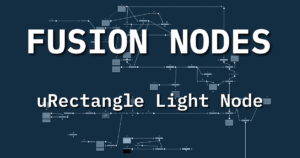Mastering the Primaries Color Wheels
Just watched the video above? Awesome! If not, hit play to get a rapid-fire walkthrough of one of the most crucial panels in DaVinci Resolve: the Primaries Color Wheels. This panel is your command center for fundamental color correction – fixing bad lighting, making skin tones look natural, balancing your shot, and even creatively stylizing your footage.
In the video (and this post), I break down the tools available on the Primaries “Color Wheels” page. Understanding these controls is essential whether you’re a beginner just starting with color grading or a seasoned pro looking for a refresher. Let’s dive into what each control does.
The Core: Lift, Gamma, Gain & Offset (Shadows, Midtones, Highlights, Everything)
These four wheels are the heart of the panel:
- Lift (Shadows): Controls the dark areas of your image. Use this wheel to adjust the color tint and brightness of your shadows.
- Gamma (Midtones): Affects the middle range of tones – where most skin tones and important details often live. Adjusting gamma significantly impacts the overall feel of your image.
- Gain (Highlights): Manages the brightest parts of your shot. Use gain to control blown-out areas or add warmth/coolness to your highlights.
- Offset (Everything): This adjusts the entire image signal uniformly – shadows, midtones, and highlights all at once. Great for overall exposure or broad color cast corrections.
How to Use Them: Click and drag within the wheel to shift the color tint. Use the slider below each wheel to adjust the luminance (brightness) of that specific range (Lift, Gamma, Gain). There’s also a handy reset button in the top right of each wheel section.
Setting Your Foundation: Points and Auto Tools
- White/Black Point Sliders: Found alongside the wheels, these let you precisely set the absolute black and white points of your image signal.
- Auto Color: Ah, the “let me guess” button! As I mention in the video, sometimes Auto Color works wonders, providing a great starting point. Other times… well, let’s just say the results can be creatively unpredictable (think caffeinated raccoons grading your footage). Use it as a potential starting point, but always refine manually.
- White Balance Eyedropper: This is far more reliable for correcting color casts. Click the eyedropper, then sample something in your footage that should be neutral white or gray. Resolve will adjust the Temperature and Tint accordingly.
Fine-Tuning Color Balance: Temp and Tint
- Temperature: This slider shifts your image along the blue-to-orange axis. Move it left for a cooler look, right for a warmer feel. Essential for correcting or setting the overall mood.
- Tint: This slider adjusts the green-to-magenta axis. It’s crucial for correcting color casts from sources like older fluorescent lights, which often have a greenish tint.
Shaping the Image: Contrast, Pivot, and Midtone Detail
- Contrast & Pivot: These two work hand-in-hand. Contrast increases or decreases the difference between the light and dark parts of your image. Pivot determines the central point around which the contrast adjustment hinges. Lowering the pivot means contrast affects shadows more; raising it affects highlights more. Play with these together to control the “punchiness” of your image.
- Midtone Detail: This is fantastic for adding apparent sharpness or subtly softening your image. Increasing it adds edge contrast, making textures pop. Decreasing it can smooth out low-detail areas, often useful for skin (use with caution!).
Boosting and Recovering: Color Boost, Shadows, and Highlights
- Color Boost: Think of this like “Vibrance” in photo editing software. It increases the saturation of less-saturated colors more aggressively than already saturated ones, helping to make colors pop without looking overly artificial.
- Shadows: This slider specifically lifts the darkest areas without affecting the black point as much as the Lift wheel might. Great for recovering detail hidden in shadows.
- Highlights: Similar to Shadows, this slider helps pull down and recover detail in the brightest areas without crushing your white point like the Gain wheel might.
The Final Touches: Saturation, Hue, and Luma Mix
- Saturation: The overall color intensity knob. Crank it up, and you get Skittles; pull it down to zero for black and white. Use it judiciously!
- Hue: This shifts all the colors in your image around the color wheel. It’s more often used for creative effects than corrective work, but can be powerful.
- Luma Mix: This is one of the most overlooked yet powerful controls! By default, it’s at 100, meaning your color adjustments (like using the Gamma wheel) also affect the luminance (brightness) of the image. If you lower Luma Mix towards 0, your color adjustments will only affect the color hue and saturation, having minimal impact on the image’s brightness. This allows for pure color changes without altering your exposure balance – a secret weapon for clean grading!











Start the discussion at postprolist.com